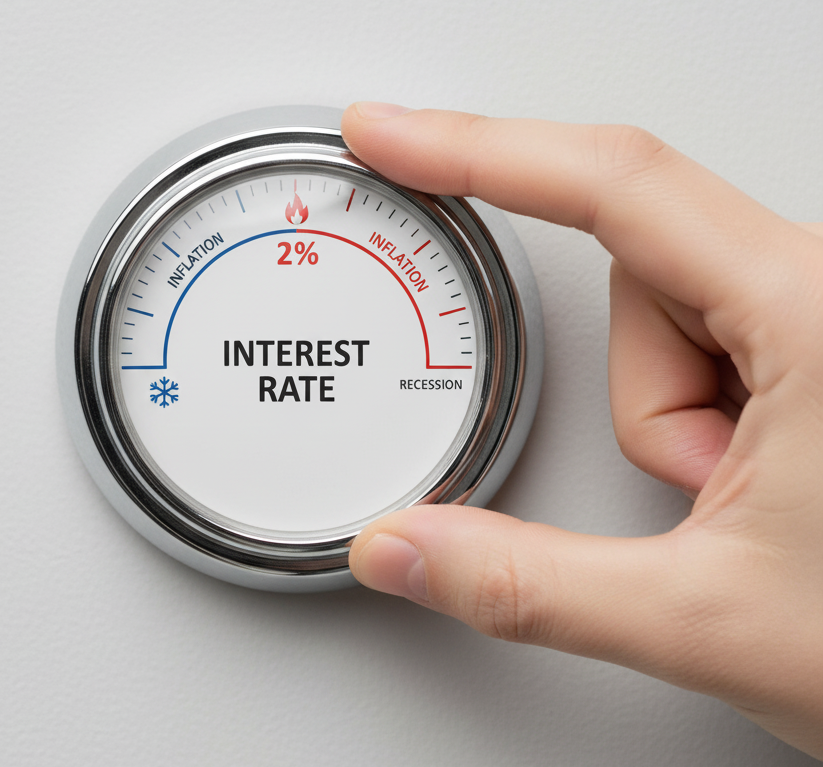To most Canadians, the Bank of Canada is an imposing stone building in Ottawa. It is not a regular bank where you can open an account, but rather the nation’s central bank—a unique Crown corporation whose actions quietly but powerfully influence everything from the cost of your mortgage to the value of the money in your wallet. This is the full story on how this critical institution works and what its decisions mean for you.
Part 1: The Invisible Hand on Canada’s Economy
Chartered under the Bank of Canada Act, the institution’s mandate is “to promote the economic and financial welfare of Canada.” To achieve this, the Bank carries out five core functions, including issuing our currency and overseeing the financial system. But its most important and visible role is conducting **monetary policy**.
A central feature of the Bank’s design is its operational independence from the government. This allows it to make decisions that serve the long-term economic health of the country, rather than focusing on short-term political goals. However, it is still democratically accountable, as its primary policy goal—the inflation-control target—is a joint agreement with the federal government that is renewed every five years.
Part 2: The Inflation Fight and the All-Powerful Interest Rate
The primary objective of Canada’s monetary policy is to keep inflation low, stable, and predictable. The Bank of Canada, in agreement with the government, defines this as keeping inflation at the 2% midpoint of a 1% to 3% target range. To achieve this, the Bank’s most powerful tool is the **target for the overnight rate**, often called its policy interest rate.
The Bank announces a target for this rate eight times a year on a fixed schedule. This one rate change then ripples through the entire economy in what is known as the monetary policy transmission mechanism.
- A Rate Hike (Cooling the Economy): When the Bank raises its policy rate, borrowing becomes more expensive. Interest on mortgages, lines of credit, and car loans goes up, which discourages spending. At the same time, saving becomes more attractive as returns on GICs increase. This combination of less spending and more saving reduces demand in the economy, helping to cool down inflation.
- A Rate Cut (Heating the Economy): Conversely, when the Bank lowers its rate, borrowing becomes cheaper, encouraging spending and investment and stimulating the economy.
This process acts with a considerable delay, with the full impact of a rate change often not being felt for 12 to 18 months. This means the Bank must be forward-looking, making decisions today based on its forecast of where inflation will be in the future.
Part 3: What It Means for Your Wallet
The Bank of Canada’s decisions have direct and tangible consequences for your personal finances.
- Variable-Rate Mortgages & HELOCs: These have a direct link to the policy rate. When the Bank raises its rate by 0.25%, your mortgage rate typically goes up by the same amount almost immediately.
- Fixed-Rate Mortgages: These are more closely tied to the yields on Government of Canada bonds. However, bond yields are heavily influenced by the Bank’s policy rate and its signals about future rate changes.
- Savings Accounts & GICs: When the Bank raises rates, the interest you earn on savings products also tends to rise, rewarding savers.
- Credit Cards: It’s a crucial point of financial literacy that most credit card interest rates are fixed at a high level and are **not** directly affected by the Bank of Canada’s policy rate decisions.
Ultimately, the goal of adjusting interest rates is to influence the cost of living. When the Bank raises rates to fight high inflation, it is making a deliberate choice to cause short-term difficulty for borrowers in order to prevent the more damaging and widespread pain of persistent inflation for everyone.

